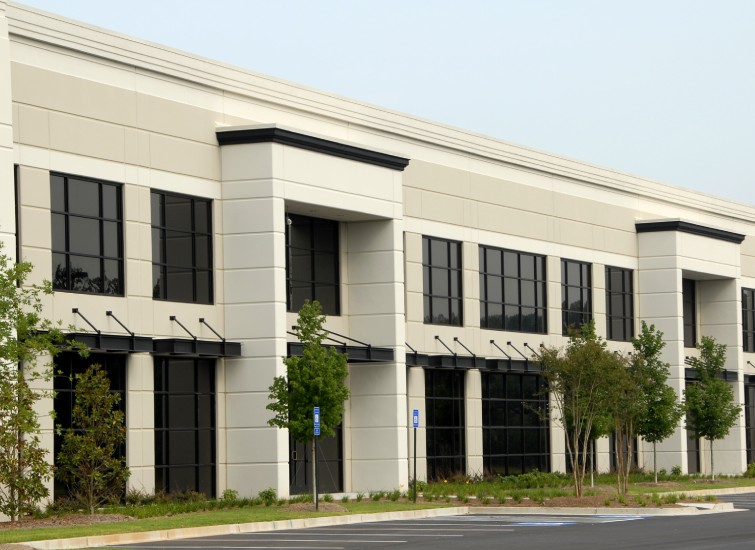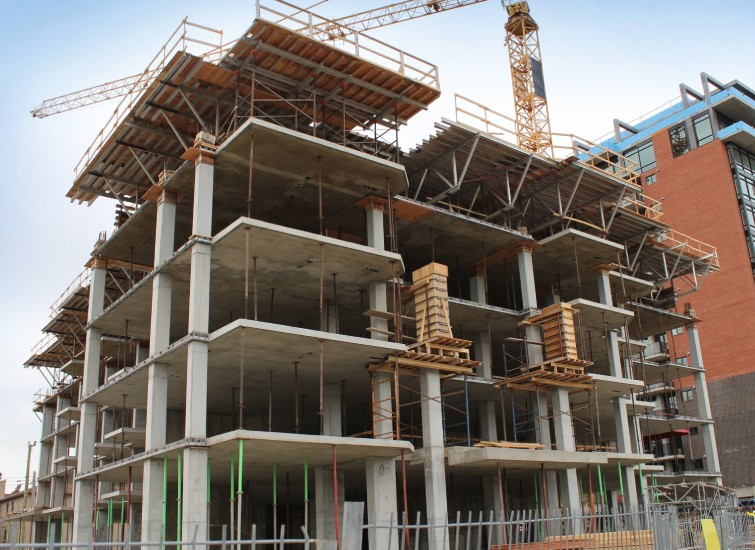What is Cap Rate in Commercial Real Estate Investments?

Advertisement: Click here to learn how to Generate Art From Text
Understanding cap rates will help you unlock the secrets to commercial real estate investing. Imagine you’re evaluating a property and need to gauge its risk and potential return quickly; that’s where the cap rate comes into play. It’s a crucial metric that offers a snapshot of a property’s yield in the current market, helping you compare it to other investment opportunities.
As you delve deeper into the world of real estate, you’ll find that cap rates are more than just numbers—they’re a reflection of market dynamics, income potential, and investment risk. Whether you’re a seasoned investor or just starting out, mastering cap rates is key to making informed decisions in the commercial real estate market.
Cap Rate in Commercial Real Estate
Definition of Cap rate
A cap rate, or capitalization ratio, quantifies the expected return on an investment in commercial real estate. This metric is a great way to compare different commercial real estate investments. real estate opportunities swiftly. It’s depicted as a percentage that estimates a property’s annual return based on the income the property is expected to generate.
Calculating Cap rate
To tackle cap rate calculations, you’ll need the property’s Net Operating Income (NOI) and its Current Market Value. Here’s a straightforward formula:
Cap Rate = (Net Operating Income / Current Market Value) × 100
Let’s delve into a real-world example. Imagine a building with an NOI of £100,000 and a current market value of £2,000,000. Using the formula
Cap Rate = (£100,000 / £2,000,000) × 100 = 5%
The resulting cap rate would imply that, based on current market conditions and the building’s NOI, you could anticipate a 5% return on your investment each year, not factoring in mortgage payments or changes in market dynamics. Keep in mind that while cap rates aren’t static, they serve as a reliable indicator for a property’s potential performance compared to the broader market.
The Importance of Cap rate
Evaluating Investment Opportunities
When you’re eyeing commercial real estate investments, understanding and utilizing cap rates is crucial. Imagine cap rates as a financial compass that guides you through a forest of investment opportunities and points out the direction which could lead to profit. Cap rates quantify the expected return on an investment property—the higher the cap rate, the higher the anticipated yield.
This metric will allow you to quickly sort through properties and identify those that offer promising returns. If risk levels are comparable, a property that has a caprate of 7% would be considered a more lucrative investment than one that has a caprate of 4%. Take a multifamily property with a NOI of $100,000, and a value $1.4 million. Its cap rate is approximately 7.14%. Compare that to a similar property in the same area with an NOI of $100,000 but a value of $2 million—a cap rate of 5%. The first property’s higher cap rate signals a potentially better investment.
By sieving through the numbers, cap rates directly influence where you’ll allocate your funds. In a market with a safe investment such as a 10-year Treasury bond yielding 3%, a property with a cap-rate significantly above this benchmark suggests an attractive risk-reward relationship.
Comparing Properties
Cap rates can also be used as a benchmarking method. They allow you compare properties across markets and asset types. Cap rate comparisons highlight market trends, and can indicate where you could find greater value.
Imagine two properties, for instance: a Class-B retail space in an active city suburb, and a high grade office building in the centre of the city. Both properties bring in similar incomes. The office building may sell for more than the retail space, which has a cap of 6.5%. The difference in cap rate reflects the perception of higher risk or lower growth potentials for retail space.
Cap rates vary by property type in the same market. In the same city, a self-storage building and a Class A Office Building could have different cap rates because of differences in operating costs, tenant turnover and lease structures. For example, self-storage could have a rate of cap around 6.5% while a Class A building might be at 5%. These comparisons will help you decide where to invest, based on your risk tolerance and return expectations.
By assessing cap rates among similar buildings, you’re better equipped to make informed choices. Higher cap rate often means higher potential returns. However, it also implies a riskier investment due to possible higher vacancy or additional expenses. Consequently, delving into cap rates and their implications ensures you’re not comparing apples to oranges but making savvy, data-driven real estate investment decisions.
Factors that affect cap rate
When you delve into the world of commercial real estate investments, you’ll quickly find that certain factors have an outsized impact on cap rates. Understanding how these factors affect your investment allows you to make better decisions and identify potential profit opportunities.
Location
The adage ‘location, location, location’ isn’t just a catchy phrase—it’s central to real estate valuation, and cap rates are no exception. The location of the property is a key factor in determining investment risks and expected returns.
- Prime urban neighbourhoods are often associated with lower cap rates, due to their perceived stability.
- Properties in developing neighbourhoods can offer a mixture of moderate cap rate and growth potential.
- Investors are more likely to take on greater risk when investing in locations with economic or structural challenges.
A property’s proximity to public amenities and business centres is also important. These essentials will likely have a steady demand for properties within easy reach, leading to a more stable NOI and lowering of cap rates.
Property Type
Each type of real estate comes with its own set risks and rewards. This influences the cap rate accordingly. Here’s how various property types generally stack up:
- Multifamily propertiesDue to the ease of filling vacancies, apartment buildings typically have lower cap rate.
- Office buildingsThe cap rate may be higher, due to the possibility that vacancy periods will be longer and turnover costs higher.
- Retail spacesConsumer trends can influence cap rates, which can vary widely depending on the economic climate and tenant mix.
- Industrial propertiesCap rates are affected by different risk profiles based on location, the type of tenant contract, and industry.
Understanding the nuances of each property type ensures you’re comparing apples to apples when assessing potential investments.
Market Conditions
Cap rates are largely determined by current and future market conditions.
- A growing economy can lower cap rates, as the confidence in the property performance increases.
- As the perceived risk increases, cap rates can increase in an economic downturn.
- Interest rates can also sway cap rates—when interest rates rise, cap rates often follow suit as the cost of capital increases.
- In the event of a price dislocation, volatile markets can lower property values, pushing cap rates up.
By keeping an eye on economic reports and forecasts as well as trends in interest rates you can anticipate changes in cap rates and strategically place your investment portfolio.
Bullet points provide a clear explanation of the impact of location, type of property, and market conditions on the cap rate, without settling for conclusions or finality. This method keeps you informed and involved, while always considering the next strategic step in the commercial real-estate market.
Limitations to Cap Rate
Ignoring Financing Costs
When you assess a property using cap rates, remember you’re looking at the surface of the income potential without delving into the depths of financing costs. Cap rates exclude debt expenses like mortgages and rental property interest. This approach is useful when considering the pure value of the property, especially if you’re comparing it with others on a cash basis. However, this can lead to misinterpretation of the property’s true performance.
Take for instance a property which has a low return after accounting for financing. If you’ve only put down a minimal down payment, the levered yield could be significantly higher, flipping a bad investment on paper to a profitable one in reality. A $1M property with a 1% yield, or $10,000, is a bad investment. If you put down 5%, which is equivalent to $50,000, then your leveraged yield will increase to 20%. Cap rate’s exclusion of financing aspects, therefore, denies a look at the full picture.

Don’t overlook potential income growth
Cap rates also fail to account for the potential growth of income. They are based on the current net operating income and do not reflect changes in occupancy rates, tenant creditworthiness, lease terms, or property conditions – all of which directly impact potential income. If you use a cap rate for a property whose income fluctuates, such as a short-term vacation rental, it may not give an accurate valuation.
Consider using alternative models such as Gordon ModelProperty with growing cash flow. Even this model has limits. The Gordon Model, for example, can present an infinite value of a property if the growth rate matches the discount rate. This is a nonsensical situation. When growth surpasses the discount rate, the model delivers a negative valuation – again, an impractical outcome.
In markets like Toronto’s condo scene, investors who opted for low cap rates in anticipation of high appreciation are now facing higher risks as appreciation slows. Integrating growth considerations into cap rates can lead to a more reliable investment approach. This will avoid the pitfalls of ignoring future income potential.
Conclusion
Cap rates are the cornerstone for a shrewd commercial real estate investment. They provide a snapshot of possible returns and allow you to weigh different opportunities. Remember, while they’re a great starting point, they don’t tell the whole story. Factors like location, property type, and market dynamics play pivotal roles in shaping these rates, so you’ll need to consider these alongside cap rates when making your decisions. Don’t let cap rates be your sole guide. Integrate them with a broader analysis, including growth projections, to ensure you’re not missing out on properties with promising futures. Smart investing is about looking at the complete picture, and that’s where you’ll find your next great investment opportunity.





